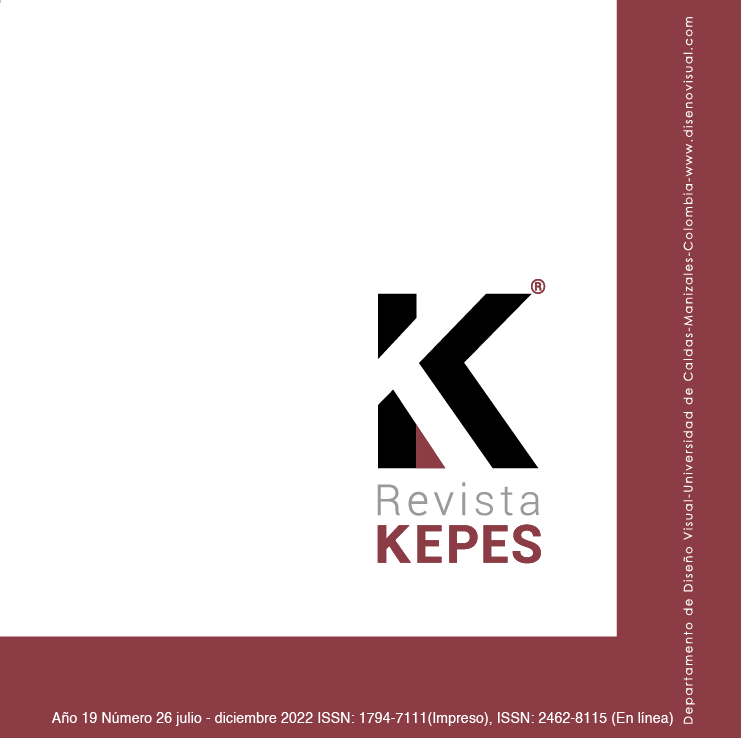Authors
Abstract
Director Pedro Almodóvar's concern for aesthetic elements of his films is one of the features that defines his career and reaches the design of the credit titles as a cover letter of his productions. From this premise, the research has focused on photography as an element that contributes to its graphic design. To address this issue, three specific objectives are set: To determine the formulas used by this filmmaker to include photographic images in the graphic design of the credit titles to compare the opening and closing credits and to establish their characteristic features based on the visual content they use and their relationship with the characters and cinematographic narration in Mujeres al borde de un ataque de nervios (1988), Tacones Lejanos (1991) and La mala educación (2004). Methodologically, the qualitative version of the content analysis was used where, from the complete filmography of Pedro Almodóvar, a delimited sample based on the credit titles that have photographic images was selected. To determine the categories, a self-made classification was developed that starts from Inceer and Vanoye for the study of visual elements, from Laibag for the relationship between the credit titles and the film narration and from Dubois and Parejo for the form of insertion of the credits.The results show four formulas that reveal the presence of photography in the credit titles: the Time-lapse, the profilmic, the frozen image and the insertion of photographs. The latter refers to real objects whose most recurrent visual motifs correspond to collage, fragmentation, artificial chromaticism, repetition of content, symmetry and visual metaphor (which marks the relationship of the credits with the characters and the film narration).
References
Bellour, R. (2010). La interrupción, el instante. En Tiempo expandido (pp. 109-143). La Fábrica Editorial.
Betancourt, M. (2017). Semiotics and title sequences. Text-Image composites in motion graphics. Routledge.
Blancas, S. (2005). Influencia de Saul Bass en la obra del diseñador Juan Gatti. En F. A. Zurián y C. Vázquez (Eds.), Almodóvar como pasión. Actas del Congreso Internacional Pedro Almodóvar (pp. 337-350). Ediciones de la Universidad de Castilla La Mancha.
Bort, I. (2011). “Pull Curtain Before Titles!” por una definición y categorización tipológica de las secuencias de títulos de crédito cinematográficas. En I. Bort, S. García y M. Martín (Eds.), Actas IV Congreso Internacional sobre Análisis Fílmico. Nuevas tendencias e hibridaciones de los discursos audiovisuales en la cultura digital contemporánea (pp. 1101-1117). Ediciones de las Ciencias Sociales de Madrid.
Casetti, F. y Di Chio, F. (2008). Cómo analizar un film. Paidós Comunicación.
Castellani, J. P. (2008). Los títulos de crédito en el cine de Pedro Almodóvar: un caso ejemplar Mujeres al borde de una crisis de nervios. HAOL, 15, 157-164. https://www.historia-actual. org/Publicaciones/index.php/hao/article/view/241
Castro, F. (2009). Sedimentación infraleve. En La fotografía en la colección IVAM. Fotomontaje y experimentación (pp. 13-18). IVAM.
Chion, M. (1988). Cómo se escribe un guion. Cátedra.
Dubois, P. (1987). La photo tremblée et le cinéma suspendu. La recherche photographique, Le cinéma, la photographie, 3, 19-27.
Gamonal, R. (2005). Títulos de crédito. Píldoras creativas del diseño gráfico en el cine. Revista Icono, 14(6), 43-67. https://doi.org/10.7195/ri14.v3i2.418
García, S. y Rodríguez, A. (2021). La pantalla fetiche: deseo y sublimación en Dolor y gloria de Pedro Almodóvar. Journal of Spanish Cultural Studies, 22(1), 95-110. https://doi.org/10.1080/14636204.2021.1880815
Inceer, M. (2007). An analysis of the opening credit sequence in film (Senior Thesis). University of Pennsylvania.
Labaig, F. (2007). Acerca de los títulos de crédito. Paperback, 4, 1-9. https://bit.ly/3dlv3Wf
Maglhaes, V. (2008). Poéticas de la interrupción. La dialéctica entre el movimiento e inmovilidad en la imagen contemporánea. Editorial Trama.
Martínez-Vasseur, P. (2004). La España de los 80 en el cine de Pedro Almodóvar. En R. Ruzafa (Coord.), La historia a través del cine. Transición y consolidación democrática en España (pp. 167-202). Universidad del País Vasco.
Moholy-Nagy, L. (2005). Pintura, fotografía, cine. Editorial Gustavo Gili.
Parejo, N. (2012). La expresión de lo fotográfico en el cine. En D. Acle y J. Herrero (Coords.), Expresión, análisis y crítica de los discursos audiovisuales: cine (pp. 65-77). Sociedad Latina de Comunicación Social.
Parejo, N. (2020). La fotografía en el cine de Pedro Almodóvar. Revista Discursos fotográficos, 16(29), 44-75. http://dx.doi.org/10.5433/1984-7939.2020v16n29p44
Poyato, P. (2015). Identidad visual y forma narrativa en el drama cinematográfico de Almodóvar. Editorial Síntesis.
Sánchez, J. L. (2017). Universo Almodóvar. Estética de la pasión en un cineasta posmoderno. Alianza Editorial.
Strauss, F. (1994). Pedro Almodóvar. Conversations avec Frédéric Strauss. Editions des Cahiers du Cinéma.
Sutton, D. (2011). Time lapse, time map. El tiempo fotográfico de San Francisco en Zodiac de David Fincher. L'Atalante: Revista de estudios cinematográficos, 12, 7-13. https://bit.ly/3JHgHM2
Vanoye, F. y Goliot-Lété, A. (2008). Principios de análisis cinematográfico. Abada Editores.

 PDF (Español)
PDF (Español)
 FLIP
FLIP






















